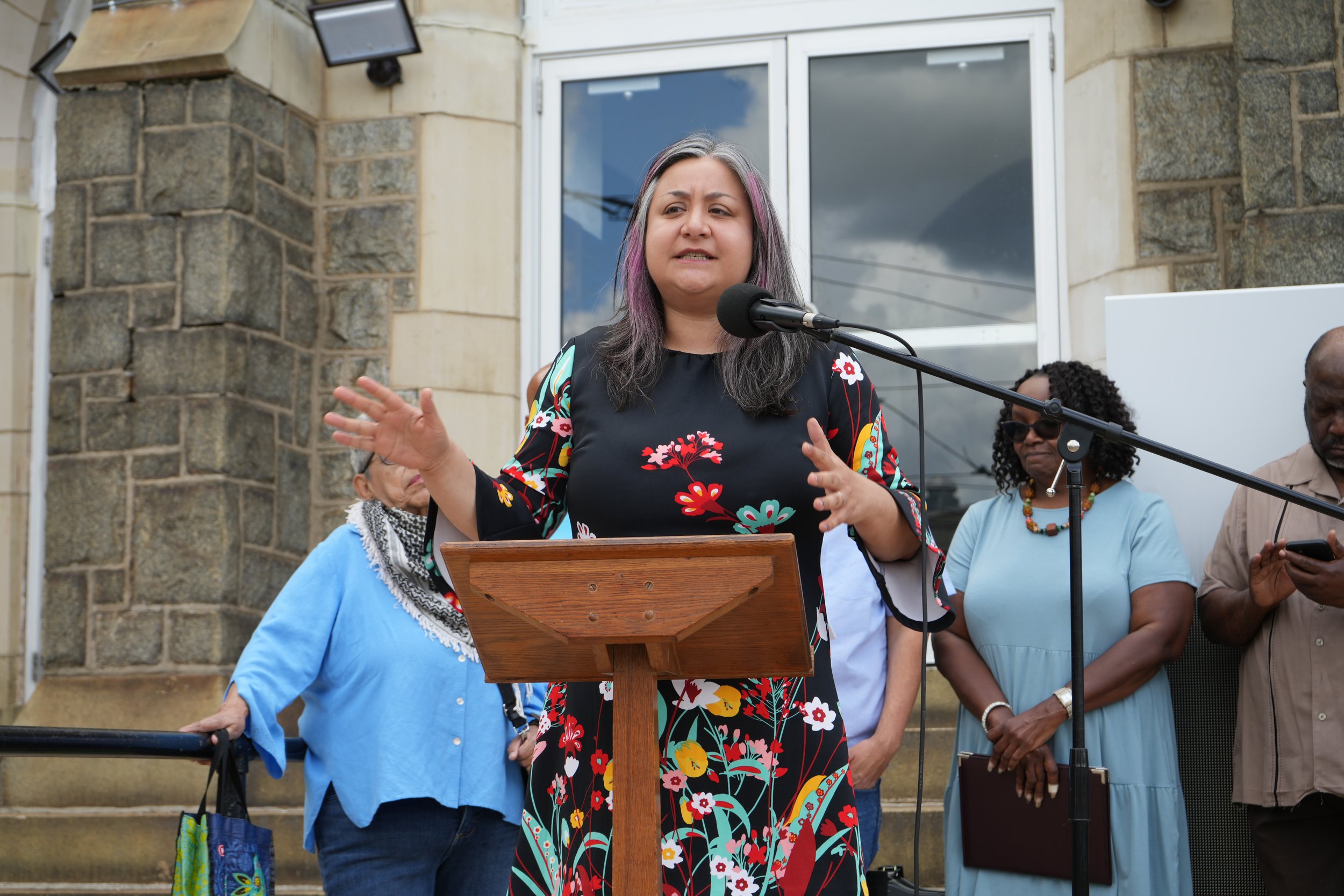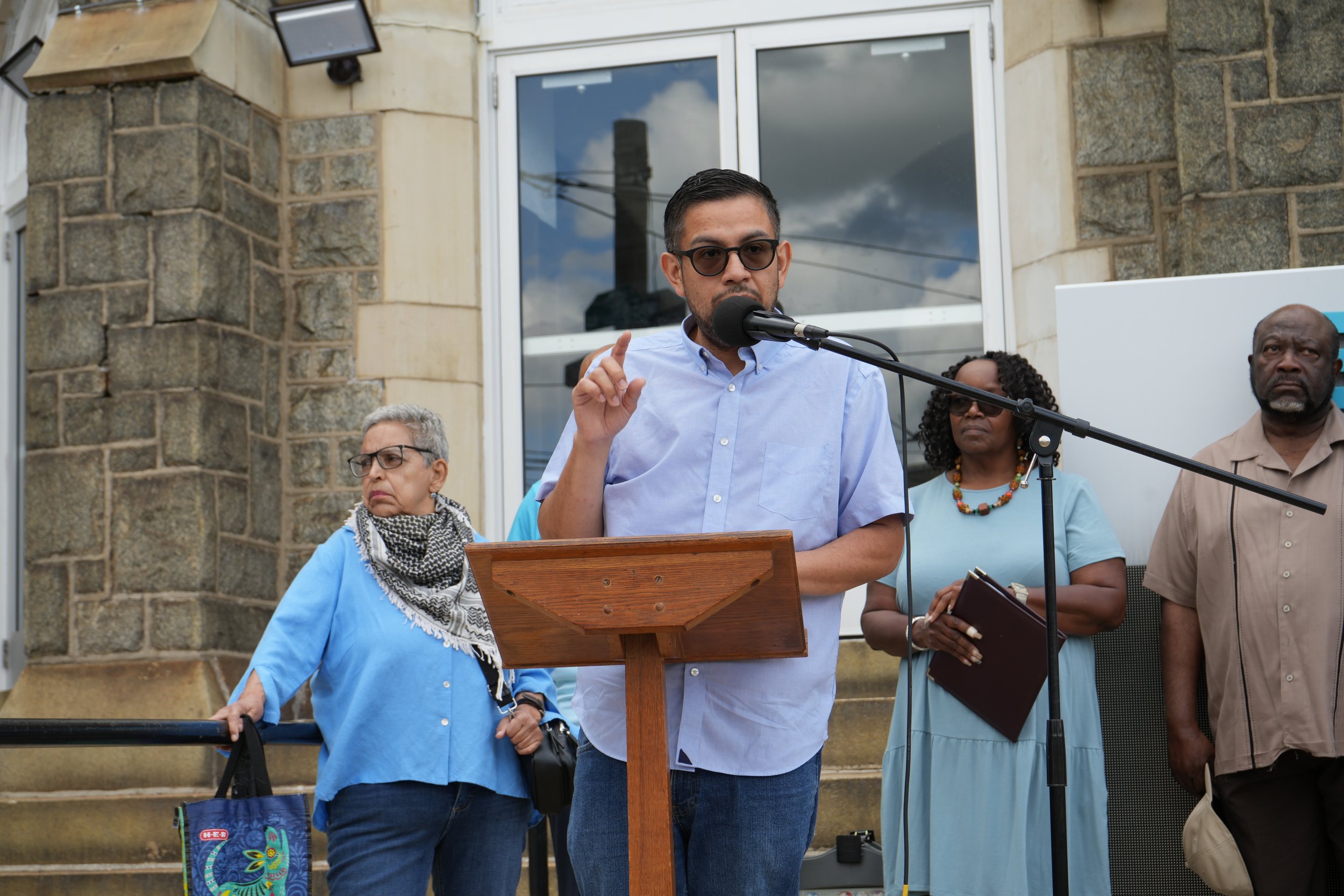New report: Pennsylvania needs immigrants to reverse population decline
The Pennsylvania Immigrant and Citizenship Coalition report said the state needs more welcoming policies to attract more immigrants.
BY NIGEL THOMPSON ON JUNE 20, 2024
Jasmine Rivera, executive director of PICC, emphasized that immigrants are keeping rural Pennsylvania towns alive economically and in industries like agriculture. Photo: Nigel Thompson/¡Presente! Media
On Wednesday, May 29, the Pennsylvania Immigrant and Citizenship Coalition (PICC), released a new report that analyzed the last 20 years of the state’s immigration data, highlighting the impact that immigrants have on population growth, the economy and voting.
“Immigrants Grow Our Communities: The Impact of Immigrants and Immigration in Pennsylvania” found that the influx of immigrants to Pennsylvania has offset the worst consequences of the state’s population decline, bolstered stagnant local economies in towns across the state with new workers and jobs and salvaged some representation at the national level following the 2020 census.
Jasmine Rivera, executive director of PICC, said the timing of the report was key. Six months ahead of the presidential election and amid a campaign that’s once again put immigration as a central issue for voters.
“We wanted to put together the data that demonstrates the facts, that demonstrates the true reality,” she said. “Immigrants have been essential to the story of our state for the last 20 years.”
By the numbers, PA’s population did grow a little more than 7%, according to 2020 Census Bureau data, but the latest county estimates for 2023 show a statewide population decline of a little more than 41,000.
Per the PICC report, PA has the 12th largest immigrant population in the U.S. and ranks 7th in immigrant population growth. The state’s foreign-born population grew 60.5% between 2010 and 2020, amounting to 277,061 people. Black immigrants led the percentage share of that population with almost 73% followed by Latino immigrants (69%) and AAPI immigrants (51%).
“Where there has been growth in this state, immigration has driven that growth,” Rivera told a small crowd gathered outside Salt & Light Church in Kingsessing for a presser on the new report.
She went on to say that rural areas of Pennsylvania stand to lose the most with Pennsylvania’s population decline, and immigrants have saved them from the worst.
Rivera said there are and the report lists a number of proposed legislation that if passed, would make PA more welcoming to immigrants. Photo: Nigel Thompson/¡Presente! Media
Citing a Center for Rural Progress report from 2021, the PICC report found that the rural population of PA is estimated to decline by almost 6% in the next 30 years. Meanwhile, in rural PA’s biggest industry of agriculture — a more-than $130 billion industry — up to 75% of the workforce could be foreign-born. Nationally, immigrant farmworkers make up 73% of the total agriculture workforce.
“That is a wake-up call,” said Rivera. “Regardless of where you live in the state, we are all dependent on having food available.
Across industries like agriculture, construction and manufacturing, the PICC report found immigrant workers helped PA save $6.4 billion in productivity loss toward gross domestic product.
Julio Rodriguez is PICC’s political director and one of the study’s chief authors. He also emceed the press conference unveiling the study. Photo: Nigel Thompson/¡Presente! Media
Other economic data pulled by the report, included a total consumer spending power of $30.1 billion and an estimated $11.5 billion in taxes paid by immigrants in PA in 2021. Per the same data set from the American Immigration Council, 65,841 immigrant entrepreneurs in PA generate $1.9 billion in income.
Benjamin Gamarra, who attended the press conference in Kingsessing, could attest that “there’s way more business thanks to immigrants.” He lives in South Philly, where Latino and AAPI immigrants have followed in the footsteps of the Italian immigrants of generations past to plant roots, start families, and found businesses that shape the community.
Gamarra said he feels fortunate to live there surrounded by such diversity.
“You can learn and understand other cultures, and that can put you ahead of the game,” he said. “It can make a much better place for everybody to live.”
On the political front, PA lost a seat in the House of Representatives in the redistricting process following the 2020 census, however, the PICC report found that PA had one of the larger populations of naturalized U.S. citizens eligible to vote in the U.S.
Ahead of the 2022 midterms, the National Partnership For New Americans (NPNA) clocked the population at 85,083.
Before the 2024 presidential election, NPNA said more than 3.5 million new naturalized citizens are now eligible to vote nationally in the upcoming presidential election.
In 2020, Pew estimated 1 in 10 voters nationally would be naturalized U.S. citizens ahead of that year’s presidential election.
“These are voters whose needs need to be prioritized,” said Rivera. “These are voters who need to be listened to and centered.”
In that vein, Rivera and other speakers like Tsehaitu Abye, PA director of African Communities Together, directed their words at lawmakers to pass more pro-immigrant legislation to attract more immigrants to the state.
“We need to ensure that all of the policies and assistant programs are inclusive and uphold the dignity and rights of all residents regardless of their status,” Abye told the crowd in Kingsessing.
The press conference brought together immigrant groups from across Philadelphia, including Asian Americans United, led by Vivian Chang. Photo: Nigel Thompson/¡Presente! Media
At the end of the PICC report is a list of nine pieces of legislation introduced to the PA legislature that the organization believes would make the state more welcoming to immigrants in the future. It also pointed to neighboring states like New Jersey, New York and Delaware, which have enacted more welcoming policies than PA and stand to benefit from more immigrant influx.
The list includes bills that would establish an Office of New Pennsylvanians, ban the construction of private immigrant detention centers in the state, and create in-state tuition for undocumented students, among others. There’s also an opposing list of nine bills deemed “anti-immigrant,” with items like banning “sanctuary city” statuses and requiring law enforcement to report undocumented individuals to ICE if they commit a crime.
Abye extended those bills to even the municipal level, citing how difficult it is for some African immigrants in her West Philly community to find housing because of gentrification enabled by local policy and zoning approved by local elected officials.
Rivera said bills like the latter and the rhetoric that’s arisen during the 2024 presidential campaign cycle around immigration work to isolate immigrants.
“When you give in to the ‘othering’ rhetoric — othering immigrants, othering human beings — you strip them of their humanity,” she said. “When you strip people of humanity, you make it very easy to abuse.”
For Abye, that’s the antithesis of the U.S.
“America has been a country for immigrants since it was America, since it was stolen and renamed America,” she said. “It’s important for us to remember that we’re humans at the end of the day, and so that’s what connects us. The more that we get to learn about each other, the more we actually find that we’re experiencing things that are the same.”







